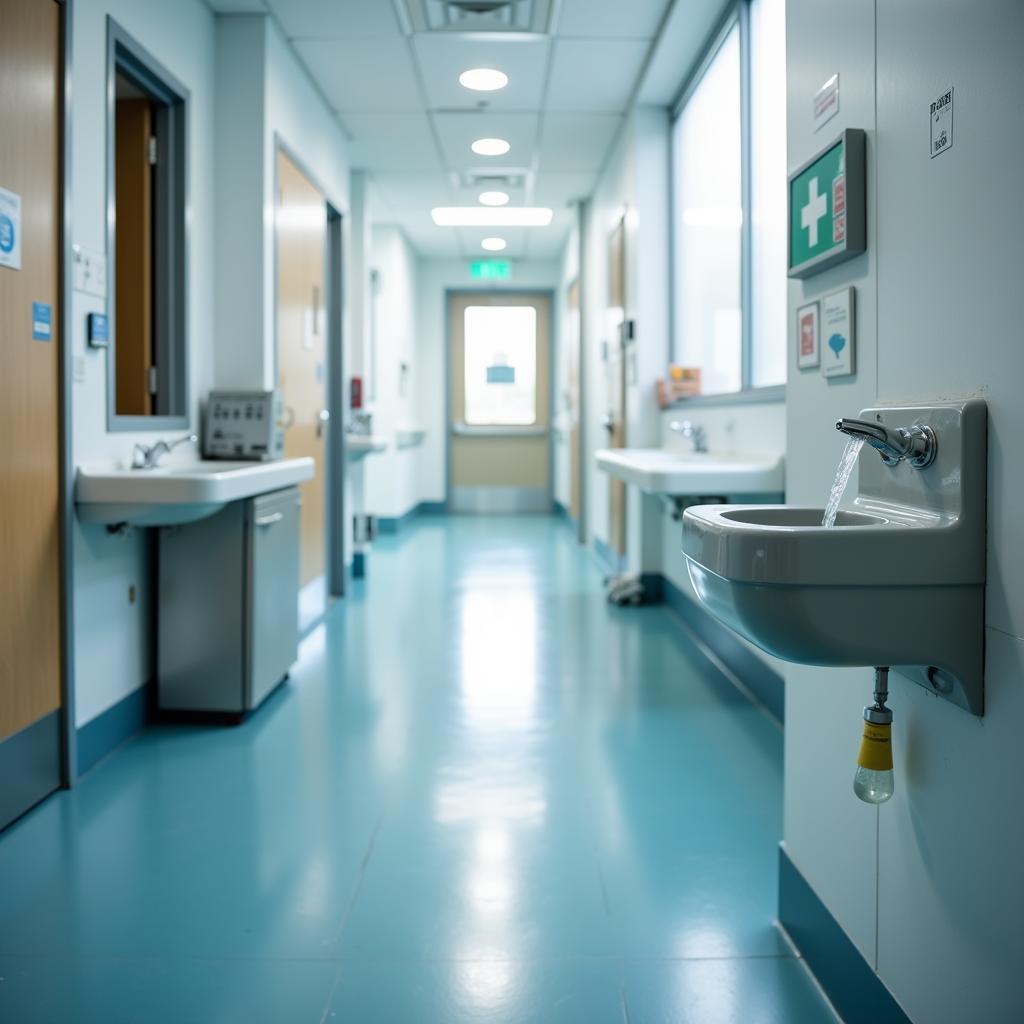The concept of an anteroom in a hospital setting might seem insignificant at first glance. However, these small transition spaces play a crucial role in maintaining a sterile environment and enhancing patient safety. They act as buffers between different areas within the hospital, minimizing the risk of cross-contamination and ensuring the smooth flow of patients and staff.
What Exactly is an Anteroom in Hospital Architecture?
An anteroom, in its simplest definition, is a small room that serves as an entryway to a larger, more critical space. In the context of a hospital, this larger space is often an operating room, an isolation room, or a laboratory. The anteroom functions as a controlled environment where healthcare professionals can prepare themselves and their equipment before entering or exiting these sensitive areas.
Why are Anterooms Essential in a Hospital Setting?
The primary purpose of an anteroom in hospital design is infection control. Hospitals, by their very nature, house a high concentration of individuals susceptible to infections. Anterooms act as the first line of defense against the spread of harmful pathogens.
Here’s how:
- Pressure Differential: Anterooms often maintain a specific air pressure difference compared to adjacent rooms. This pressure gradient prevents airborne contaminants from flowing into sterile areas.
- Donning and Doffing PPE: They provide a designated space for healthcare workers to safely put on (don) and take off (doff) personal protective equipment (PPE) like gowns, gloves, masks, and shoe covers. This meticulous process minimizes the risk of carrying pathogens from one area to another.
- Hand Hygiene: Anterooms are typically equipped with handwashing stations stocked with antiseptic solutions. This encourages frequent and thorough hand hygiene, a cornerstone of infection control.
- Storage and Preparation: They can also serve as a staging area for medical supplies and equipment, ensuring they are readily available for procedures and minimizing unnecessary traffic in and out of critical spaces.
 Hospital Anteroom Infection Control
Hospital Anteroom Infection Control
Anterooms and Specialized Hospital Areas
While anterooms are crucial in many areas of a hospital, they are particularly important in the following:
- Operating Rooms: Maintaining sterility is paramount during surgical procedures. Anterooms for operating rooms are typically equipped with specialized air filtration systems to further reduce the risk of infection.
- Isolation Rooms: Patients with highly contagious diseases are isolated to prevent the spread of infection. Anterooms to isolation rooms help ensure that healthcare workers entering and exiting the room are following proper infection control protocols.
- Laboratories: Hospital laboratories often handle sensitive samples and require strict contamination control. Anterooms provide a space for technicians to prepare samples and change into lab coats before entering the main laboratory area.
The Evolution of Anteroom Design
Early hospital anterooms were often small and purely functional, lacking any specific design considerations. However, modern hospital design increasingly recognizes the importance of anterooms in optimizing patient flow and enhancing infection control. As a result, we are seeing a shift towards larger, more ergonomically designed anterooms that incorporate:
- Pass-Through Cabinets: These cabinets allow for the transfer of materials between the anteroom and the adjacent room without the need to open a door, further minimizing the risk of contamination.
- Visual Cues: Clear signage, color-coded walls, and distinct flooring materials help to delineate the transition between the anteroom and the adjacent areas, reminding staff of the need for increased infection control measures.
- Technology Integration: Some modern anterooms feature integrated technology, such as automatic door openers and touchless sinks, to further reduce the spread of germs.
Anterooms: Small Spaces, Big Impact
Though they may seem like minor architectural details, anterooms play a critical role in maintaining a safe and sterile environment within a hospital. They embody the hospital’s commitment to patient safety by providing a dedicated space for meticulous infection control practices. As hospital design continues to evolve, we can expect to see even more innovative approaches to anteroom design, further enhancing their effectiveness and contributing to improved patient outcomes.
Frequently Asked Questions about Hospital Anterooms:
1. Are anterooms required by law in all hospitals?
Building codes and regulations regarding anterooms vary depending on the location and the specific function of the room they serve. However, many healthcare authorities strongly recommend their inclusion in the design of critical areas within hospitals.
2. What is the ideal size for a hospital anteroom?
The size of an anteroom depends on the size and function of the adjacent room and the volume of traffic it receives. However, it should be large enough to allow for comfortable movement of staff and equipment and to accommodate all necessary fixtures and equipment.
3. Can an anteroom have two doors?
Yes, most anterooms have two doors, one leading to the adjacent room and one leading to the general corridor. This design helps to maintain the pressure differential and prevent air from flowing directly from the corridor into the sterile area.
4. What kind of signage is typically found in an anteroom?
Anterooms usually have clear signage indicating the required PPE for entry, hand hygiene protocols, and any specific procedures that must be followed.
5. How often are anterooms cleaned in a hospital?
Anterooms in hospitals are considered high-traffic areas and are typically cleaned and disinfected multiple times a day, following strict protocols to prevent the spread of infection.
Do you have other questions about infection control measures in hospitals or other healthcare-related topics? You can find more informative articles on our website, including:
Contact us at Phone Number: 02437655121, Email: [email protected], or visit us at our address: 298 Cau Dien Street, Minh Khai, Bac Tu Liem, Hanoi, Vietnam. We have a 24/7 customer service team ready to assist you.